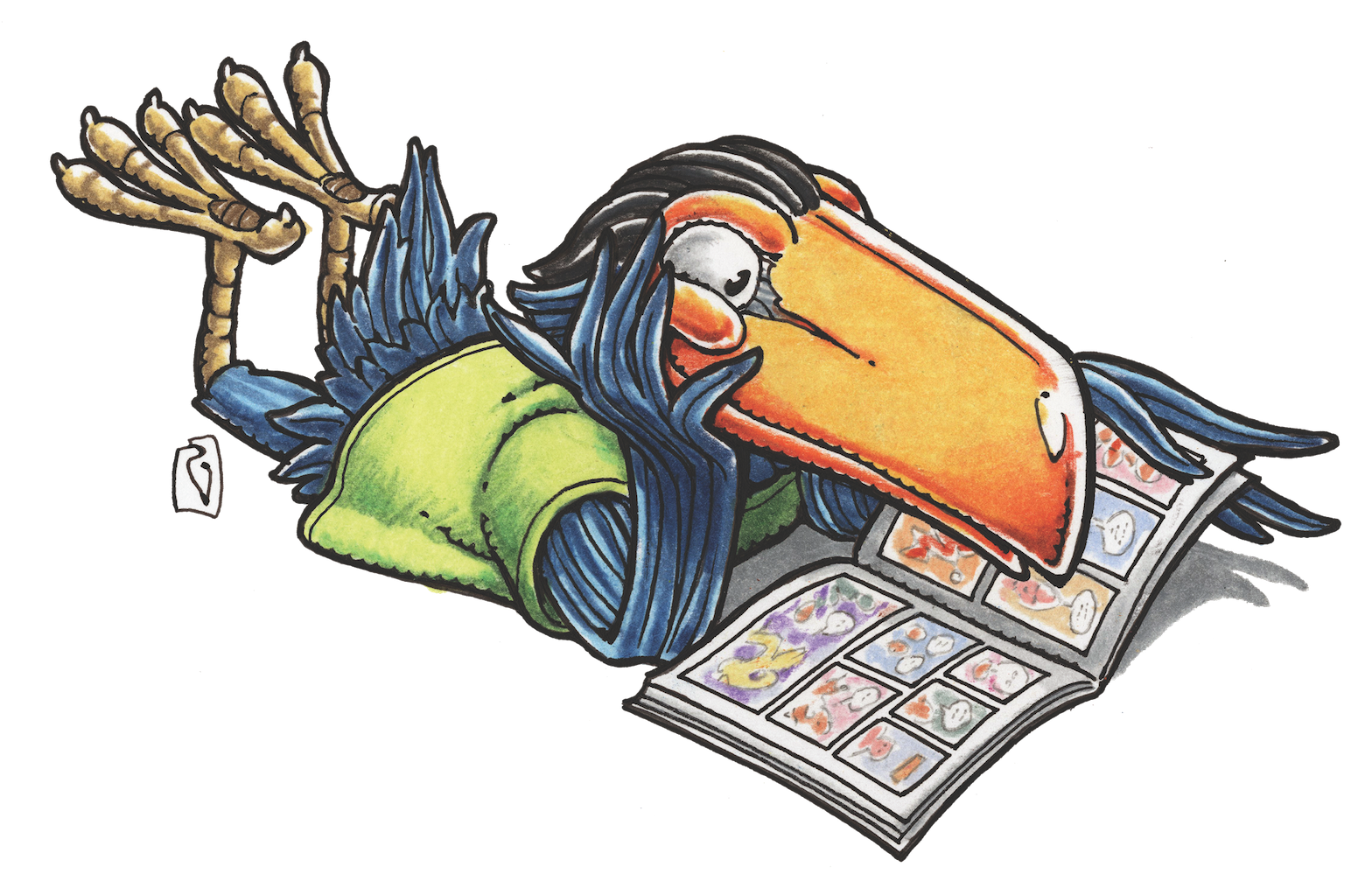STEVE LIEBER’S DILETTANTE
Dilettante 013: On Giving a Good Critique


Last year, I wrote a Dilettante column offering advice for artists showing their work around conventions. It was well-received, but I realized a short time after that I’d neglected the other side of that equation: I hadn’t said anything about how to give a useful critique, nor have I seen much written on the subject.
I don’t have any formal training as a teacher, but I was a student myself once, and I’ve spent a couple of decades giving young artists feedback on their work both at conventions and at Periscope Studio. Nothing I have to say should be taken as the final word on the subject, but I hope my insights and experiences might be of some value.
When someone brings me their portfolio, the first thing I try to do is what I did in the preceding paragraph—establish my limitations and clarify my perspective. I usually tell them that I’m a comics artist with an approach firmly rooted in traditional Western storytelling (i.e., not manga or art-comics.) I can give feedback on that sort of work, but it’s important that they know where my views are coming from.
The next thing I say is important: “We’ve only got a little time for this. I’m going to spend that time focusing on things you’re doing wrong. That doesn’t mean you’re doing everything wrong, or that there aren’t good qualities in your stuff, but I think you’ll get more value out of me talking about things you need to work on.” I tell them this because for many young artists, their entire sense of self worth is wrapped up in being good at what they do. In high school they were probably the best artist in their peer group. Shame-based, drill-sergeant teaching can be an effective strategy for a long-term mentor-protégé relationship, but for short critiques, I’ve found that what I have to say is more likely to sink in if I make it clear from the start that I respect them for the effort they’ve put in.
After that, I start flipping through the pages. I’ve often got a pretty good idea what I’m going to be talking about before I reach the end of the first page, but I try to keep an open mind as I go. Some inexperienced artists just add to their portfolios by sticking new pages at the back without weeding out the old stuff up front, and the work gets a lot better as you page through. (When an artist brings me an overstuffed portfolio like this, I’ll often ask them to just show me the best 8 pages.)
I ask the artist questions while I’m doing this:
What’s your priority: to be hired by a publisher to work on someone else’s project, or to get the story you’re showing me here published?
If the former, I’m going to steer my suggestions towards making a portfolio that’ll showcase hirable skills. If the latter, I’m going to critique the work with an eye towards what will make that particular story work best.
Do you have any instructors giving you regular feedback? What are they telling you?
I’ll sometimes meet an artist who is getting horrible advice from an instructor. In cases like that, I’ll do my best to be extra clear WHY I’m giving them advice that’s 180 degrees from what they’ve been hearing.
Which artists do you admire and try to emulate?
This often helps me understand choices they’re making, and I can sometimes incorporate things those artists do into my suggestions.
I’ll also ask myself a bunch of questions:
Is there a narrative?
If not, I’ll often bow out of the critique. I’m good at critiquing storytelling, but don’t have nearly as much to offer cover artist, or character designers.
Can I follow the story or am I confused about what’s going on?
Are the characters drawn consistently?
If not, is the artist at least making use of tags (distinctive clothing, hair etc.) to keep the characters recognizable when they blow the likeness?
Does the artist demonstrate a good command of basic academic drawing?
If not, I need to decide if I think they can learn. Do I focus on how-to-draw or what-to-do-when-you-can’t-draw?
Is the artist putting the “camera” where it needs to be to tell the story effectively?
Is the artist making choices that are creating a lot more work than is necessary?
Is there one area that’s way more in need of feedback than others?
One artist I met had a portfolio full of thoroughly professional work when he was drawing animals and monsters, but his humans were amateurish in comparison. I spent that critique talking about drawing people.
Are there problems in the work that are easily corrected?
Do I have anything to offer the artist when it comes to refining her aesthetic, or should I limit myself to problem solving?
When I’ve gone through the whole portfolio, I start with the critique. I try very hard to rein in my tendency towards being a wiseass. I don’t always succeed, and if anyone reading this has ever been on the receiving end of it, my sincerest apologies. (That said, when an artist replies to my criticisms or corrections with excuses, I shut them down immediately.)
My criticisms are always a grab bag. In addition to my overarching comments, I’ll point out tangencies, egregious violations of the 180-degree rule, errors in anatomy, weird perspective, places where the artist neglected to do important research, odd choices in character design, poorly spotted areas of black, whatever catches my eye. I encourage them to take notes if they have something to write on. And I try to make a point of defining the terms I use, so that jargon like “tangency,” “180-degree rule,” and “spotting black” don’t go over their heads. It’s important to find simple, concrete ways to talk about these things, and to clarify why it’s a problem when they aren’t done correctly. If I’ve got an example of a place where I screwed it up, I’ll point to that. If I have tracing paper with me, I’ll sometimes lay it over a panel and sketch out my own solution.
I also recognize that even a perfectly phrased explanation might not sink in. Some lessons can only be learned when a student is ready, and it might be a year or two before they can understand what you’re saying.
If there are published artists who are particularly good at solving the problems they’re trying to solve, I’ll try to steer them towards that artist’s work. It’s rare when someone leaves my critique without a list of names to go investigate. And I often find myself making the case for doing more life drawing, and using reference to help bring both variety and authority to the final work.
In the end, despite what I said about focusing on what’s wrong, I try to find something to be encouraging about. When I really beat up on an artist, I always want to make sure they understand that I only spent the time and energy to do so because I take their efforts seriously. If I’ve done my job right, they’re going to leave my table with information that will make their work better. And maybe next year or the year after, they’ll be looking at some younger artist’s work, surprised to discover just how much you learn when you’re asked to teach.
Do you have thoughts about what works and what doesn’t when giving a critique? Let’s make this a conversation. Reply to me on Twitter @steve_lieber (hashtag #crits) or on Facebook at https://www.facebook.com/steve.lieber (relevant thread will be on 1/14/14).
Dilettante by Steve Lieber appears the second Tuesday of every month on Toucan!